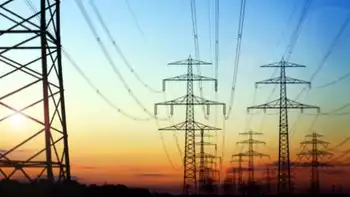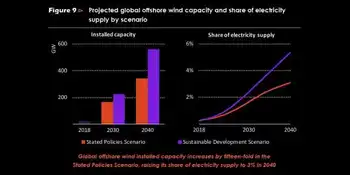New Jersey Preps For Deregulation
BERGEN COUNTY, New Jersey -- - Welcome to the brave new world of energy.
Come Aug. 1, a century of rules, regulations, and predictable rates will be replaced by open-market competition, less regulatory control, and rates that could soar based on conditions in markets far removed from North Jersey.
When the journey toward deregulation began four years ago with passage of the historic Electric Discount and Energy Competition Act, advocates predicted customers would benefit from lower prices, increased choice, and technical innovations, much as happened when a federal judge forced the breakup of AT&T two decades earlier.
It hasn't happened quite as expected. Most rate cuts mandated by the new law will be wiped out when the phase-in period ends July 31, and only one non-utility generator - Green Mountain Energy Co., which seeks to capture the cleaner-air market while charging slightly more than the utilities - is actively competing for residential customers.
But that doesn't mean there has not been significant change since the law was passed in 1999, said Mark Sperduto, director of corporate issues at Public Service Electric and Gas Co., New Jersey's largest utility with nearly 2 million customers.
"A lot has happened that is not visible," but it has set the stage for what's ahead, Sperduto said.
Early on, customers saw a brief flurry of activity - billboards, direct mail, and telephone marketing by third-party generators seeking to sign up customers - followed by a rapid withdrawal by most marketers and claims that the structure of the process makes it impossible for them to make money.
"Retail competition hasn't done real well because the legislation and the [Board of Public Utilities] orders fixed the price for generation four years ago, and that's the price competitors had to compete against," Sperduto said.
"It hasn't worked out," he said. "Prices weren't very reflective of what was going on in the market." Come August, when the artificial price caps are lifted, "we'll have a market price, and there is going to be some encouragement for retail competition."
There will also be structural changes in aggregation rules, making it easier for communities and organizations to join together in purchasing power, said BPU President Jeanne Fox.
"I expect competition," she said.
Even so, the biggest change customers will see Aug. 1 will be higher prices that will wipe out most, if not all, of the double-digit rate cuts that have been phased in over the last four years.
Each of the utilities is seeking to recover deferred costs - money spent for power over and above what they could charge customers during the phase-in period - as allowed under the law.
In addition, they are seeking rate increases to cover expenses for their infrastructure, such as the $1.3 billion Jersey Central Power & Light has spent to upgrade its delivery system since its last increase 10 years ago.
Fox has promised to review the filings closely to make sure all claims are justified, but increases of around 10 per cent are quite possible by summer. PSE&G, for example, combines a series of cuts and increases that would raise rates by 9.5 per cent Aug. 1, but that would still be 5.5 per cent lower than four years earlier.
Rates are not the only thing changing. There is also a major structural change with the separation of the commodity - the electricity itself - and its delivery.
The utilities were encouraged to sell off their generating plants and to buy power from third-party sources, which is the route JCP&L, Orange & Rockland Utilities, and Conectiv took. PSE&G, however, elected to remain in the generating business, but it had to spin off its power division into a separate, unregulated unit.
As a result, power purchases are open to competition, with little regulation, leaving customers technically free to shop around for suppliers - if they can find one.
At the same time, delivery remains tied to geography, with customers having no choice among four companies that carve up most of the state. Also, delivery, as well as service, remain regulated by the Board of Public Utilities and the utilities are required to provide power for customers who decide not to switch suppliers.
Even though there has been little movement in the retail market, "the wholesale market is very competitive. ... and that will get the best price for consumers," Sperduto of PSE&G said.
That was shown in the spirited first-of-its-kind auction for electricity conducted in February among the four utilities. In a complex bidding process done over the Internet, the utilities locked up prices for all customers who remain with them for the 12 months that began Aug. 1, 2002.
The process worked so well the BPU approved an expanded auction for next year, with separate bidding for 10-month and 34-month periods, beginning in August.
By stabilizing prices in a volatile market, New Jersey set a benchmark for non-utility generators and avoided the problems experienced in other states, including New York, where monthly adjustments caused Consolidated Edison customers to be hit with massive rate increases whenever wholesale power prices surged.
Related News

Renewable electricity powered California just shy of 100% for the first time in history
LOS ANGELES - Renewable electricity met just shy of 100% of California's demand for the first time on Saturday, officials said, much of it from large amounts of solar power produced along Interstate 10, an hour east of the Coachella Valley.
While partygoers celebrated in the blazing sunshine at the Stagecoach music festival, "at 2:50 (p.m.), we reached 99.87 % of load served by all renewables, which broke the previous record," said Anna Gonzales, spokeswoman for California Independent System Operator, a nonprofit that oversees the state's bulk electric power system and transmission lines. Solar power provided two-thirds of the amount needed.
Environmentalists…




